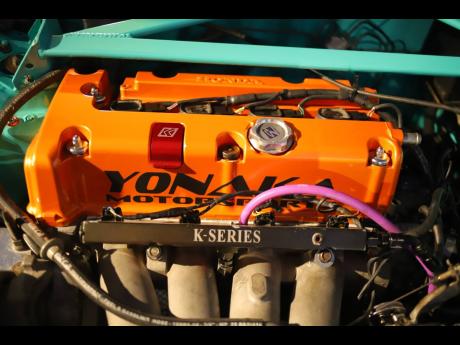Pointers on overheating
You are in heavy traffic and your car engine begins to boil. How would you feel? What would you do?
How a motorist copes with an overheated engine often determines whether he keeps his car properly serviced or not. Whenever the temperature gauge remains in the ‘normal’ position, all is well. However, if the needle moves slowly to ‘H’, you know something is wrong. It is therefore best to move the vehicle to the pavement, out of the traffic.
“The engine of the car is basically a converter of energy,” says Kurt Harding, auto mechanic. “It converts the energy of heat into the energy of motion,” he adds.
We may have noticed that when water is coming to a boil, in a glass coffee percolator, that small bubbles start rising from the bottom, as the boiling point approaches. The water has begun to boil at the bottom, where it is in closest contact with the burner. “In your car’s engine the same thing occurs in what we refer to as the ‘hot spots’,” Harding adds.
A pressurised cooling system is unquestionably the more efficient and offers far greater protection to the engine. In fact, the cooling system is one of the hardest worked systems of the entire motor car. Therefore, its proper functioning is important to the operational cost and life of the engine.
The point is, failure of any one of the many cooling-system components may be disastrous. Overheating may crack the block, which could mean a new engine. Excessive heat may also destroy the cylinder heads. On the flip side, if the cooling system operates at too low a temperature, oil circulation may be restricted or completely blocked by the formation of sludge and the engine will fail.
The engine overheats, here are some reasons:
1. Plugged or collapsed radiator hoses.
2. Low coolant level.
3. Exterior of radiator core is filled with insects or other foreign matter.
4. Inoperative water pump.
5. Defective radiator pressure cap.
6. Low engine-oil level.
7. Prolonged idling in heavy traffic, especially when automatic transmission is left in gear, when car is stationary.
8. Loose fan belt.
9. Blown head gasket.
10. Valve or ignition timing excessively retarded or advanced.
11. Loose cooling fans on radiator cooling tubes.
12. Contaminated coolant.
13. A note to motorists: Wait for overheated engine to cool before removing the pressure cap and also before filling the radiator with coolant.
The basis of a well-maintained motor car is a well-tuned engine. Without an engine that operates at full efficiency, a car is a hazard on the highway and a source of despair and undue stress for its driver.

